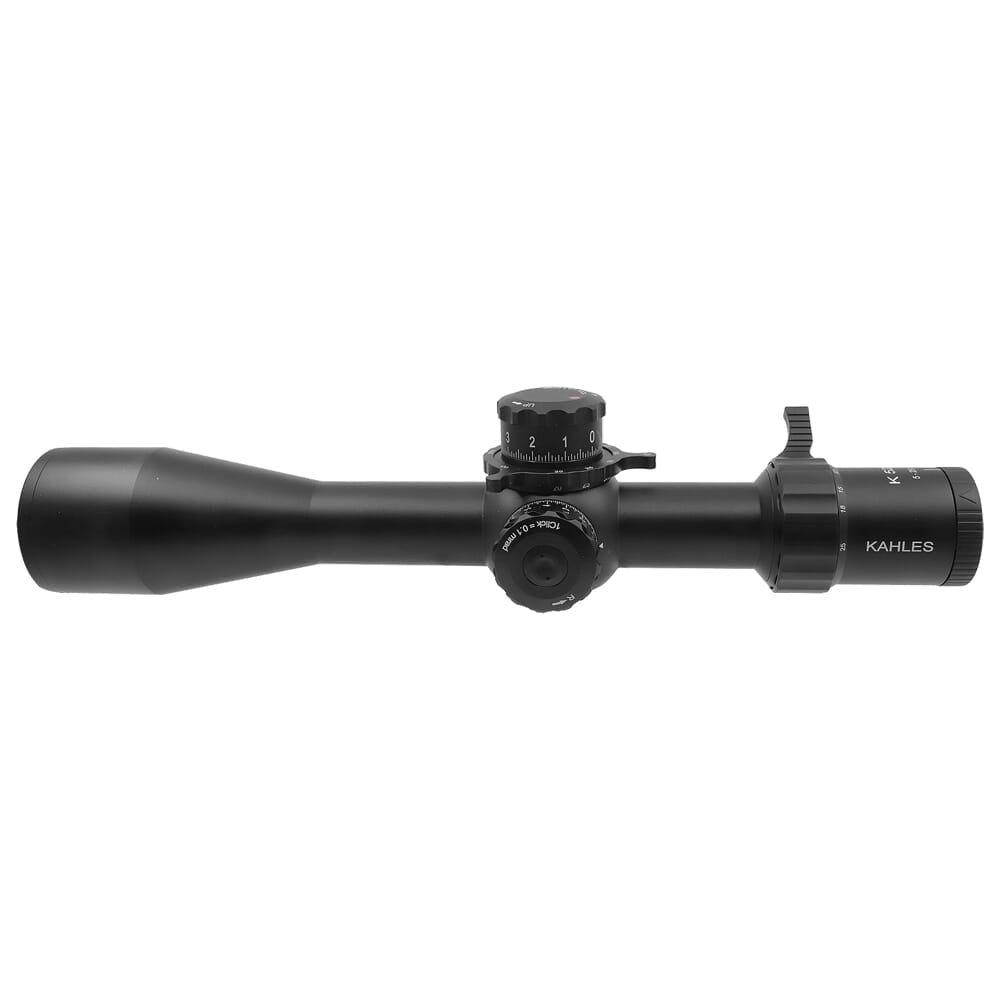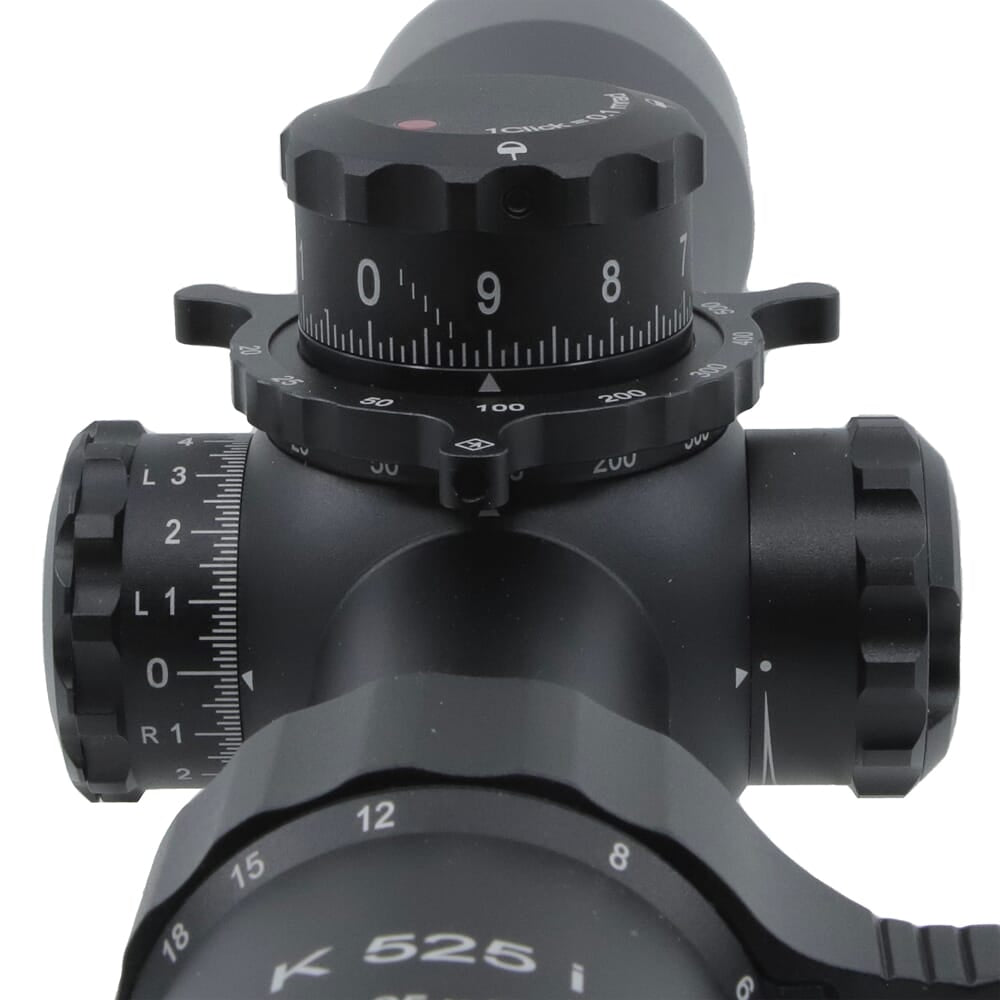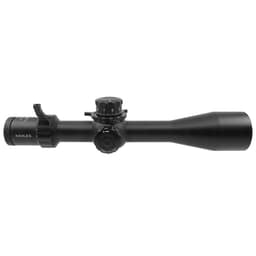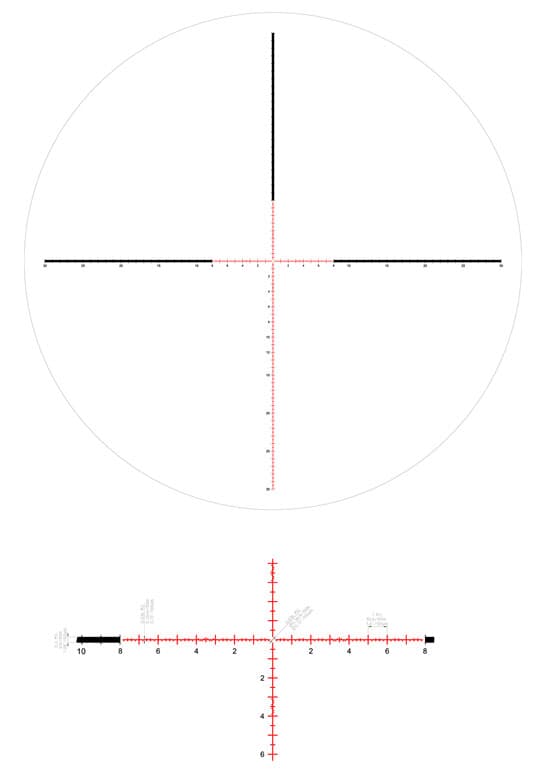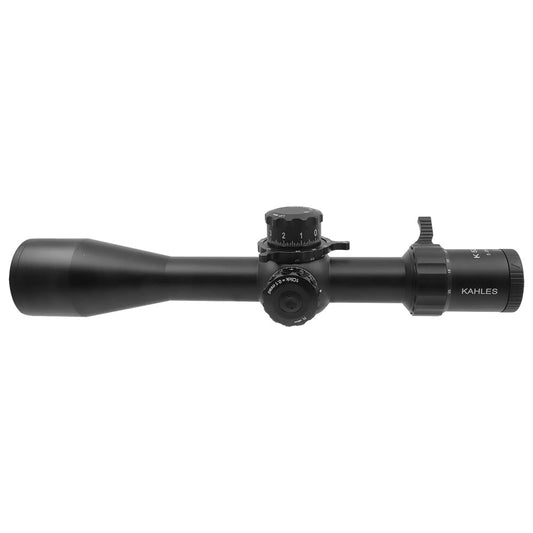

Kahles K525i 5-25x56 DLR CCW SKMR Riflescope delivers precise targeting and superior optical performance for long-range shooting. Equipped with a first focal plane reticle, this scope allows for accurate aiming at any magnification level. The illuminated reticle enhances visibility in low-light conditions, making it ideal for early morning or late evening hunts. Ergonomically designed controls, including easy-to-read MIL-based turrets, facilitate quick adjustments without disrupting your shooting stance.
Versatility is a key feature, with options for both right and left windage configurations. The patented Twist Guard prevents accidental changes to your zero setting, while the extra-long throw lever enables rapid magnification adjustments. Integrated parallax adjustment in the elevation turret ensures precision dialing for every shot. This scope is engineered for those who take their shooting seriously, whether for competition or hunting.
Features:
- HIGH CONTRAST OPTICS for superior image quality at any distance.
- INTUITIVE CONTROLS allow for swift adjustments without breaking your shooting position.
- FIRST FOCAL PLANE reticle ensures accurate aiming at any magnification.
- ILLUMINATED RETICLE enhances visibility in low-light conditions.
- EXTRA-LONG THROW LEVER facilitates rapid magnification changes during competitions.
- PATENTED TWIST GUARD prevents accidental adjustments while maintaining zero.
- RUGGED CONSTRUCTION withstands harsh environmental conditions for reliable performance.
- ZERO STOP TECHNOLOGY ensures quick return to initial settings after adjustments.
Technical Specifications Table
| Specification | Details |
|---|---|
| SKU | 10684-Kahles |
| Magnification Range | 5x - 25x |
| Lens Diameter | 56mm |
| Weight | 35 ounces |
| Eye Relief | 3.74 inches |
| Field of View | 23.16 - 4.89 meters @ 100 meters |
| Reticle Position | First Focal Plane |
| Turret Adjustment (Click Value) | 0.1 MRAD |
What’s in the Box?
- Extra-long throw lever
- Parallax spinner
- User manual
Customer Reviews
"The K525i's clarity and precision have transformed my long-range shooting. Highly recommended!"
"The controls are intuitive, and I love the illuminated reticle for low-light conditions."
FAQ
How does the K525i compare to other long-range scopes? The Kahles K525i excels with its advanced optical performance and user-friendly features, making it ideal for serious competitors. Its first focal plane design allows for accurate reticle scaling, unlike some second focal plane scopes.
Is the Kahles K525i durable enough for extreme conditions? Absolutely! This scope is built to withstand harsh environments, ensuring that it performs reliably whether you’re in a competition or out in the field.
Similar Models
Looking for more outstanding optics? Check out our extensive Kahles lineup, including models like the Kahles K318i for streamlined versatility and the Kahles K624i for unparalleled clarity. Explore our full collection to find the perfect optics tailored to elevate your shooting experience!
You May Also Like
Here’s some of our most similar products people are buying. Click to discover trending style.

